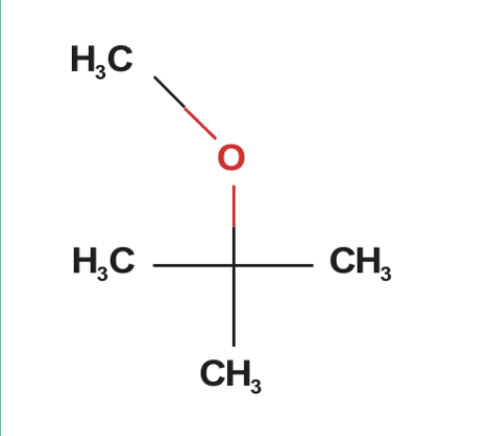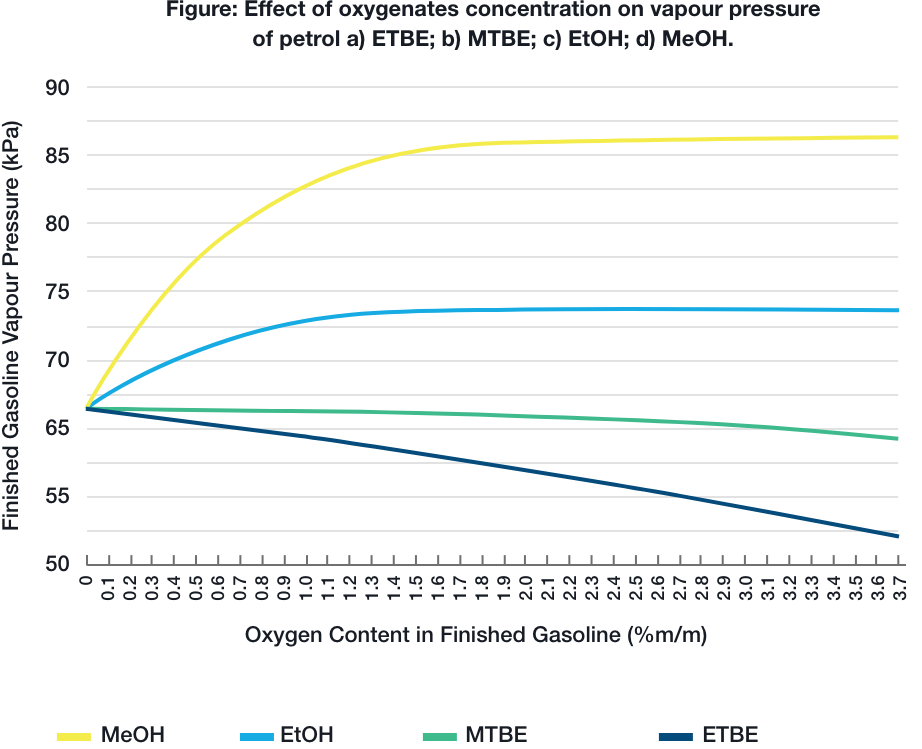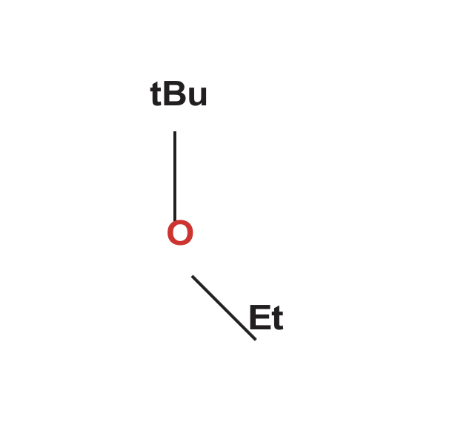
MTBE is a volatile, colourless liquid, with an odour similar to terpene. It has a boiling point of 55.2ºC and freezing point of -109ºC. MTBE is flammable and is soluble in other ethers, hydrocarbons, and alcohols. MTBE is only sparingly soluble in water (4.2 wt.%). MTBE is produced by acid-catalyzed condensation of methanol and isobutylene. MTBE is almost exclusively used to increase the octane and oxygen content of petrol.
The research octane number (RON) of MTBE is between 115-135, and the motor octane number (MON) between 98-110, depending on the base petrol blendstock. This range has been determined by a large number of experimental data obtained when formulating petrol.
The 2016 SAE paper ’Blending Octane Evaluation of Fuel Ethers: A Literature Review’ indicates that the RON level of MTBE is 117 and of MON is 102. Blending octane numbers of petrol are sensitive to the composition and octane numbers of the base petrol.
According to the MTBE Handbook, which takes into consideration some of the studies, a 15% v/v of MTBE represents a reasonable concentration of MTBE in petrol in terms of octane number increase, change in fuel stoichiometry, and commercial availability of MTBE. The high-octane properties of MTBE are particularly effective in upgrading low-octane unleaded petrol components such as naphtha and natural gasoline.
The boiling point of MTBE is low, which provides higher front-end octane numbers (FEON) to petrol. FEON is the octane number of a petrol fraction which boils below 100 degrees Celsius. This is an important element in cold-start conditions, when the low-boiling compoents of petrol get a chance to vaporize. MTBE is very effective in boosting the front-end octane and gives very high FEON numbers (135 RON). The FEON of MTBE is higher than that of butane, reformate, alkylate, and aromatics. FEON also increases engine efficiency during the low-speed acceleration stage.1
Among the properties that influence the performance of petrol are Reid Vapour Pressure (RVP) and distillation profile. In many countries, including the US and members of the European Union, the RVP is kept low to reduce evaporative VOC emissions which lead to ground-level ozone.

Adding MTBE to petrol may affect its RVP, depending on the RVP of the blendstock. For example, blending 15 wt.% MTBE in a 63 kPA blendstock decreases the RVP of the finished petrol by approximately 2 kPa (Figure 3). Hence, there is no need to remove butane with MTBE and, depending on the RVP limit of the finished petrol, additional butane can be added to the blend to reduce cost. This is one of several advantages of ethers over alcohols.
Figure 3 illustrates how ethanol and methanol both increase the volatility (RVP) of petrol. Adding ethanol to petrol causes an RVP increase ranging from 7 to 12 kPa depending on the RVP of the Blendstock for Oxygenate Blending (BOB). The RVP increase from 1.0 vol. % methanol is of the order of 15 kPa and increases to 20 kPa at 2.0 v/v methanol. This makes alcohols less useful than ethers for formulating low RVP petrol for ozone non-attainment areas. This also requires the refiners to remove additional butanes and pentanes when producing BOBs for alcohol blending, which increases cost. The RVP impacts of different oxygenates are compared in Figure.
MTBE boils in the same temperature range as other light refinery components. MTBE is soluble in any ratio with petrol. In contrast with alcohols, MTBE does not form azeotropes with other hydrocarbon components or depress the distillation curve (T50) of the finished petrol.
1 Handbook of MTBE and Other Gasoline Oxygenates. Halim Hamid Mohammed, Ashraf Ali March 11, 2004, CRC Press, p. 41.

Ethyl tertiary-butyl ether (ETBE) is a flammable liquid with a boiling point of 72ºC. ETBE is produced by the acid-catalyzed condensation of isobutylene and bio-ethanol. The blending vapour pressure of ETBE is 27.6 kPa, which is significantly lower than that of ethanol. The blending octane of ETBE is 119 RON and 103 MON. The effect of ETBE on the distillation characteristics is similar to MTBE. ETBE blends linearly with petrol and does not form azeotropes.
ETBE offers advantageous physical and chemical properties compared to ethanol for petrol blending including:
ETBE offers advantageous physical and chemical properties compared to ethanol for petrol blending including:
Blending ETBE with petrol for ethanol blending also imparts the following benefits: